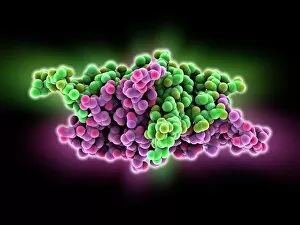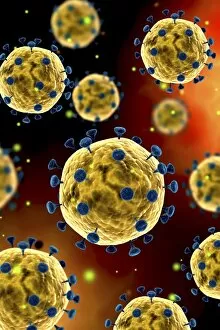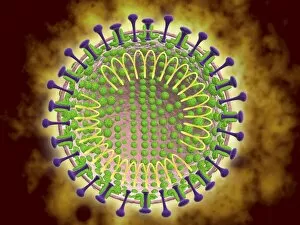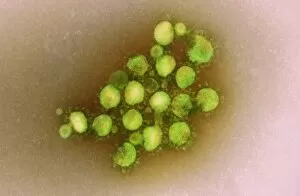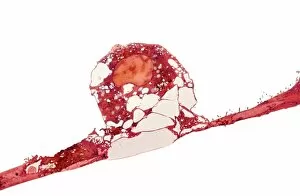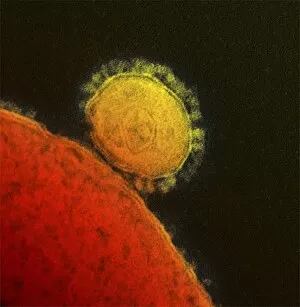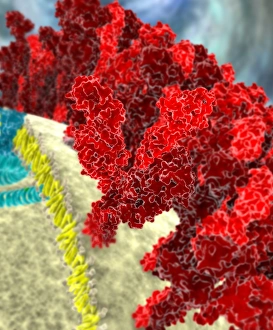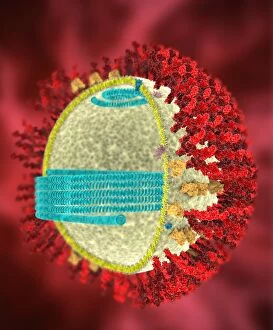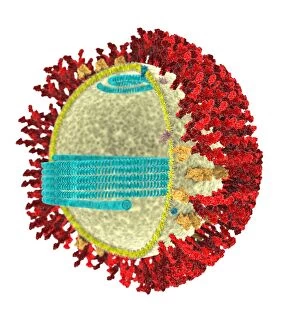Severe Acute Respiratory Syndrome Collection
"Unveiling the Menace: Exploring Severe Acute Respiratory Syndrome" In this captivating image, we witness the intricate world (SARS
All Professionally Made to Order for Quick Shipping
"Unveiling the Menace: Exploring Severe Acute Respiratory Syndrome" In this captivating image, we witness the intricate world (SARS). At its core lies the SARS coronavirus protein, a key player in this devastating illness. Through a microscopic lens, we are granted a glimpse into the minuscule realm where this virus thrives. The conceptual image of the coronavirus showcases its unique structure and composition. Its spherical shape is adorned with characteristic spike-like projections that give it an almost ethereal appearance. This hauntingly beautiful depiction serves as a reminder of the hidden danger lurking within. Zooming in further, we encounter another microscopic view of both the SARS virus and Henipavirus. These close-ups reveal their distinct features and highlight their potential to wreak havoc on our respiratory system. The artwork F007/8094 captures the essence of SARS virus with its intricate details, while F007/7847 and F007/7960 offer alternative perspectives on this formidable pathogen. Delving deeper into its molecular makeup, we explore vital components such as the surface protein molecule (F006/9560), RNA stem-loop motif (F006/9544), and capsid protein (F006/9504). Each element plays a crucial role in enabling viral replication and transmission – mechanisms that contribute to SARS' ability to spread rapidly among populations. As scientists continue to unravel these mysteries, understanding these proteins becomes paramount in developing effective treatments or preventive measures against SARS. This visual journey through microcosms sheds light on an ongoing battle between humanity's quest for knowledge and nature's relentless pursuit to challenge us. Let us not underestimate the power held by these seemingly innocuous entities; instead, let us be inspired by their complexity as we strive towards safeguarding global health from severe acute respiratory syndrome's grasp.

